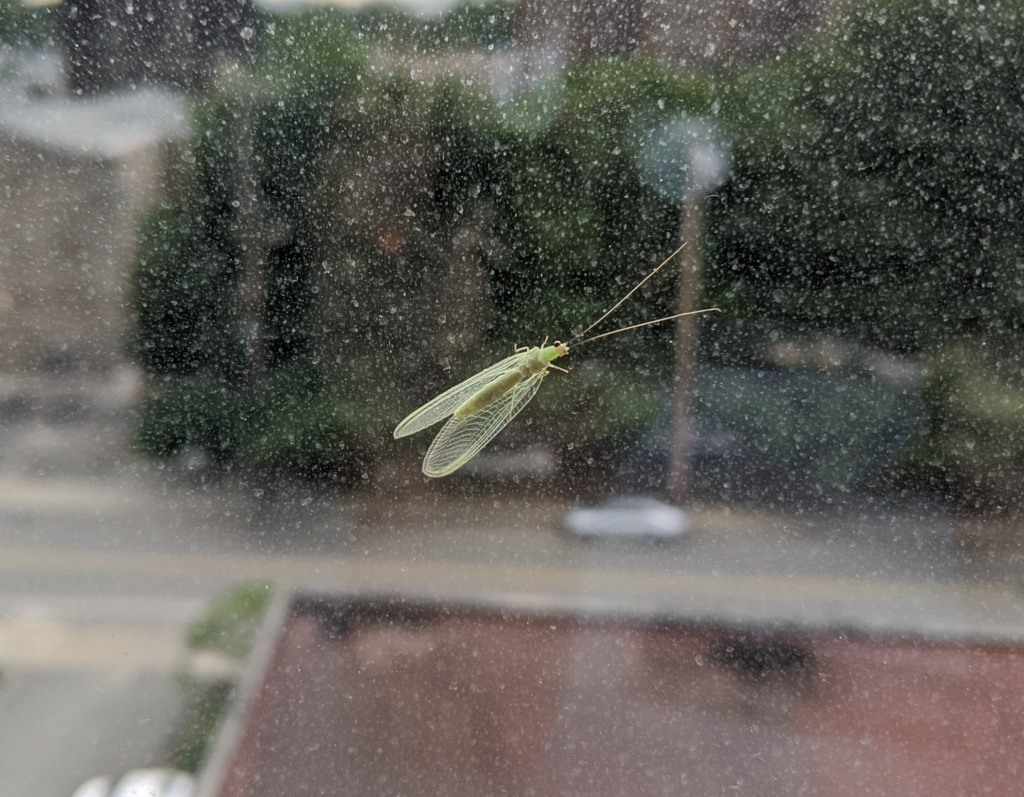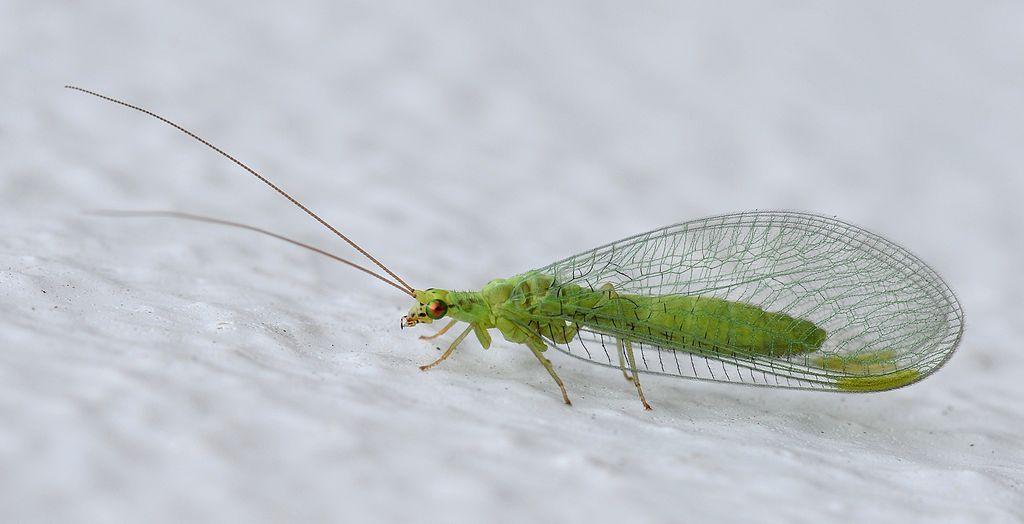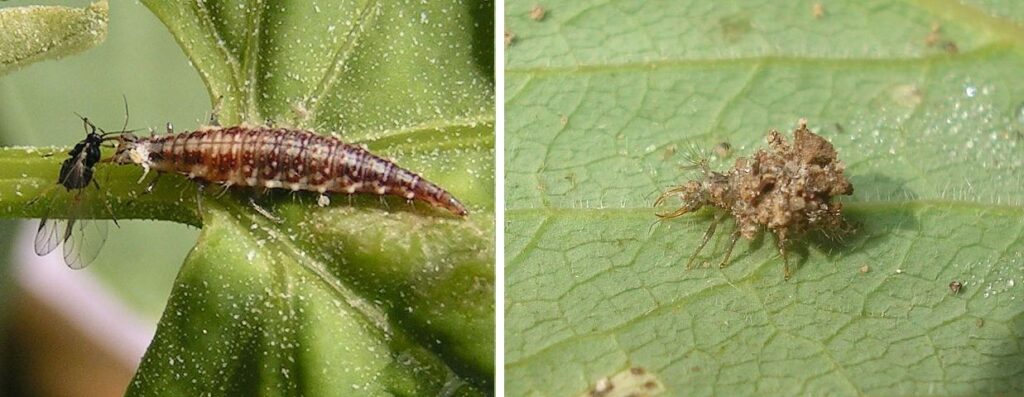
Last week a beautiful green bug perched on a window at our new home in Oakland. My bug expert friend, Monica Miller, told me its identity and some amazing facts about its lifestyle.
This green lacewing is probably in the Chrysopa or Chrysoperla genus, both of which are very common in North America. The species are so similar that some have been reclassified back and forth from one genus to the other.

The bugs themselves have no trouble figuring out who is who. According to Wikipedia, Chrysoperla courtship “songs” are so different that individuals of one species will not react to the other’s vibrations.
After they mate, lacewing females lay their eggs on the tips of stalks which form from the silk they exude with each egg. The egg stalks remind me of the flowers on Solomon’s seal (Polygonatum). Watch her lay eggs in this video.
The adults are beautiful but the real appeal of lacewings is that a single larva can eat up to 400 aphids per week. Often called aphid lions some species drape their backs with debris as a disguise.

Lacewings grab the aphids with their pincers and then …
Green lacewings are so good at biological pest control that you can buy them online.
I wonder … was my green lacewing the offspring of eggs-in-the-mail?
(top photo by Kate St. John, remaining photos from Wikimedia Commons; click on the captions to see the originals)
p.s. Seven years ago I wrote about aphid lions. Check out this vintage blog with Aphid Lions video.